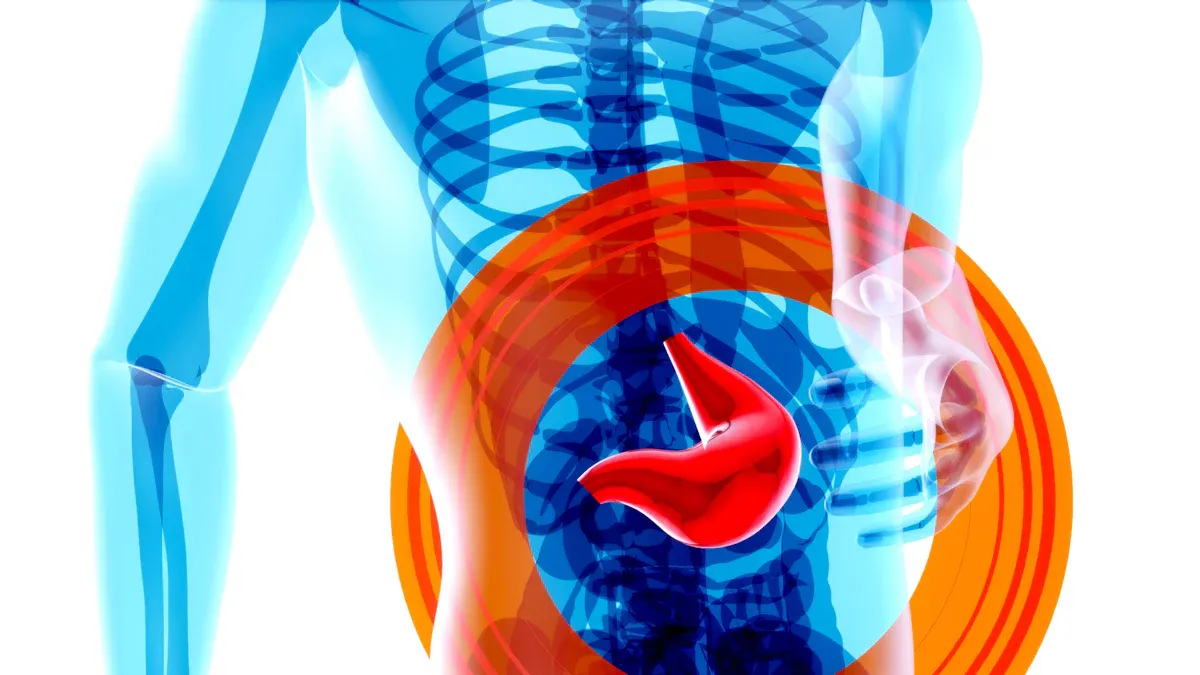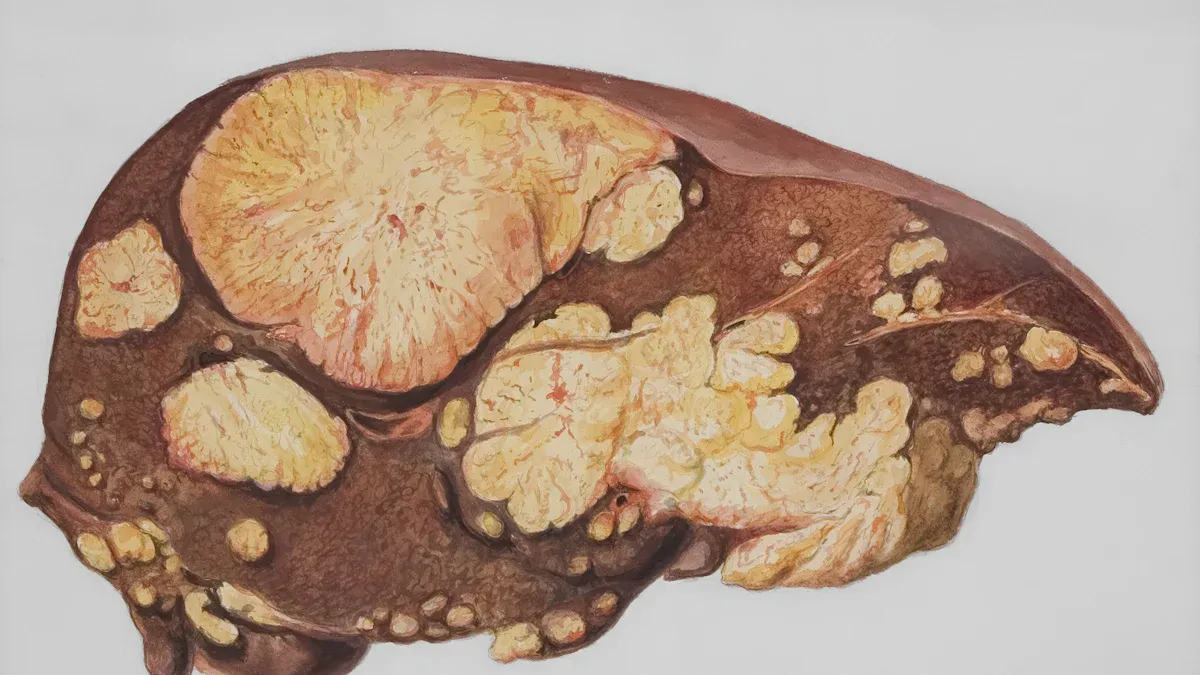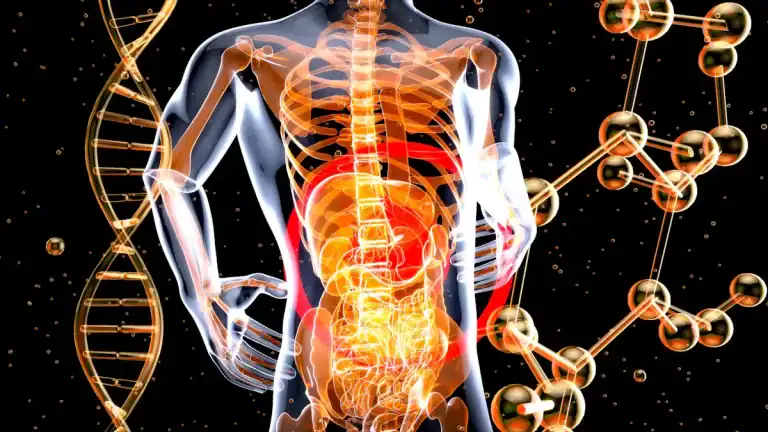
Levels of AST and ALT significantly above normal ranges often indicate dangerous liver damage, but these are not absolute thresholds. A doctor must interpret your specific liver enzyme levels. High numbers, especially dangerous AST levels, signal significant issues within your liver. AST (Aspartate Aminotransferase) and ALT (Alanine Aminotransferase) are key enzymes found in your liver. These enzymes rise when liver cells are damaged. This article helps you understand what these liver enzymes mean. You will learn their causes and when you need medical attention for your liver.
Key Takeaways
AST and ALT are liver enzymes. High levels in your blood mean your liver cells are damaged.
Normal AST and ALT levels are usually between 0 and 35 units per liter. Many things can change these numbers.
Very high AST and ALT levels, especially over 1000 U/L, mean serious liver damage. You need to see a doctor right away.
The AST/ALT ratio helps doctors find the cause of liver damage. A ratio over 2:1 often means liver damage from alcohol.
Watch for symptoms like tiredness, nausea, or yellow skin. See a doctor if you have these signs or high liver enzyme test results.
Understanding AST And ALT Enzymes

What Are AST And ALT
You might wonder what AST and ALT truly are. These are special proteins called enzymes. Your liver cells contain these enzymes. Their main job is to speed up chemical reactions inside your liver. When your liver cells are healthy, these enzymes stay mostly inside the cells. However, if your liver gets damaged, these enzymes leak out into your bloodstream. This is why an ast blood test is so important. A higher level of these enzymes in your blood suggests your liver has damage. The ast blood test and alt levels give doctors clues about your liver’s health. These enzymes are vital for proper liver function.
Normal Ranges For AST And ALT
What is a normal ast range for these important enzymes? For most healthy adults, the normal range for AST and ALT is typically between 0 and 35 units per liter (U/L). However, these numbers can vary slightly. Your doctor will consider your specific situation.
Here are some general ranges:
Adults: 0-35 units/L or 0-0.58 μKat/L (SI units). Values are often a bit lower in females than in males.
You can also look at these typical ranges:
Analyte | Males (U/L) | Females (U/L) |
|---|---|---|
ALT | 8.7~47.3 | 8.4~45.2 |
AST | 15.7~46.9 | 15.1~46.2 |
It is important to know that the standard normal ast range of less than 40 IU/L has been around since the 1950s. Some experts now believe this range might need an update. This is because we understand more about liver diseases today. Your ast blood test results are a key part of any liver function test.
Factors Influencing Normal Ranges
Many things can affect your ast blood test results. Your age, sex, and even your ethnic background play a role. For example, boys often have higher AST and ALT levels than girls. Your AST levels tend to go down as you get older. However, your ALT levels might show a U-shaped trend, meaning they increase with age.
These trends are seen in many different groups of people. For instance, males often show a clear increase in ALT levels after age 11. Your ast blood test can also show a continuous decrease in AST from ages 2 to 14. The ratio of AST to ALT also changes with age and sex. This means your ast blood test results are unique to you. Your doctor will consider all these factors when they look at your ast blood test. This helps them understand your liver enzyme tests better.
Interpreting Elevated Liver Enzymes
This section will explain what different numbers on your liver enzyme tests mean. You will learn about specific thresholds for ast and alt. Levels above 40 U/L can show inflammation or damage in your liver. Your ast blood test provides crucial information here.
Mildly Elevated Levels
You might see mildly elevated liver enzymes. This means your ast and alt levels are a bit higher than normal. Doctors generally consider levels 1.5 to 2 times the normal value as mildly elevated. For example, if the normal range is 0-45 IU/L, an alt of 85 IU/L and an ast of 90 IU/L would be mildly elevated. These values are about double the upper normal limit.
Many things can cause this slight elevation. Nonalcoholic fatty liver disease is a very common reason. It affects many people. Other causes include:
Alcoholic liver disease
Medications that affect your liver
Viral hepatitis (like hepatitis B and C)
Hemochromatosis (too much iron in your body)
Sometimes, conditions outside your liver can also cause elevated liver enzymes. These include thyroid problems, celiac disease, or muscle disorders. If you have persistent mild elevations, especially if they are more than two times normal and you feel fine, your doctor will want to look closer. This warrants further evaluation to find the cause. Your ast blood test can help track these changes.
Moderately Elevated Levels
Moderately elevated liver enzymes mean your ast and alt levels are higher. These levels are usually more than 5 times but less than 15 times the upper limit of normal. This kind of elevation suggests more significant liver damage.
Several conditions can cause moderately elevated liver enzymes:
Acute flare-ups of long-term liver diseases (like hepatitis B or autoimmune hepatitis)
Drug-induced liver injury (DILI) from certain medicines
Ischemic liver injury, which happens when your liver does not get enough blood
Acute blockage in your bile ducts (these levels often go down once the blockage is cleared)
Acute viral hepatitis (here, alt levels are often higher than ast)
Severely Elevated Levels
When your liver enzyme levels are severely elevated, it signals serious liver damage. This means your ast and alt numbers are much higher than moderate levels. For ast, values greater than 500 U/L are already considered severe elevation. This level of elevation means your liver cells are experiencing significant stress or injury.
You need prompt medical attention for such high liver enzymes. An ast blood test showing these numbers is a red flag. Elevated ast levels like these always need investigation.
Extremely High Levels
Extremely high levels of ast or alt are very concerning. These are defined as values that go over 1,000 U/L. Such a dramatic elevation points to acute and severe liver damage.
You might see these very high numbers in cases like:
Acute viral hepatitis: Your alt levels can reach several thousand units per liter.
Acetaminophen overdose: This is a type of acute toxic liver injury. Your alt can even go above 10,000 U/L.
Acute ischemic events: This happens when your liver suddenly loses blood supply.
These extremely high liver enzyme levels require immediate medical evaluation. They indicate a critical situation for your liver. Dangerous ast levels at this height mean you need urgent care.
Interpreting High AST Levels
You need to understand what specific AST thresholds mean for your liver. These numbers help doctors figure out how much liver injury you have.
AST Levels And Liver Injury Severity
When your AST levels rise, it tells you something about your liver’s health. You can classify these changes into different categories.
Mild Elevation: Your AST levels are less than 5 times the normal upper limit. This often points to conditions like fatty liver, certain medications, or mild inflammation.
Moderate Elevation: Your AST levels are 5 to 10 times the normal upper limit. This range, especially around 200 U/L for AST, often indicates serious liver damage. You might see this with chronic hepatitis, alcohol use, or drug toxicity.
Marked or Severe Elevation: Your AST levels are more than 10 times the normal upper limit. This suggests significant liver cell damage. Liver enzyme levels between 150-200 U/L can already show severe cell damage.
Here is a table to help you understand what different AST levels might mean:
AST Level (U/L) | Severity/Indication |
|---|---|
40-120 | Mild elevation, often associated with fatty liver disease, medication effects, or mild inflammation |
120-400 | Moderate elevation, potentially indicating more significant liver inflammation, chronic hepatitis, or alcohol-related liver disease |
400-1000 | Severe elevation, suggesting serious liver damage, acute hepatitis, or bile duct obstruction |
>1000 | Extreme elevation, a medical emergency indicating acute liver failure, severe drug toxicity, or shock liver |
High AST levels exceeding 1,000 U/L suggest severe injury. This can happen with drug-induced liver injury or acute viral hepatitis. These dangerous ast levels require immediate medical attention.
AST/ALT Ratio Significance
The ratio between your AST and ALT levels also gives important clues about your liver. Doctors use this AST/ALT ratio to help diagnose different liver conditions.
For example, in Non-Alcoholic Fatty Liver Disease (NAFLD), your ALT level is often higher than your AST. This means your ALT/AST ratio is typically less than 1. This ratio is a reliable way to spot hepatic steatosis, even if your liver enzyme levels are within the normal range. An elevated ALT/AST ratio can also link to insulin resistance, systemic inflammation, and oxidative stress.
The AST/ALT ratio is especially important for diagnosing alcoholic liver disease.
An AST:ALT ratio greater than 2:1 is a key sign of alcoholic liver disease.
A study showed that patients with alcoholic liver disease had a mean AST/ALT ratio of 2.6. Patients with nonalcoholic steatohepatitis (NASH) had a ratio of 0.9.
A high AST/ALT ratio indicates advanced alcoholic liver disease. Most people who drink a lot but do not have severe liver damage usually have an AST/ALT ratio less than 1.
If your AST/ALT ratio is 2 or higher, it strongly suggests alcoholic liver disease. For instance, in patients with advanced alcoholic liver disease, 69% had an AST/ALT ratio greater than or equal to 2. Only 8% had a ratio less than or equal to 1. This ratio helps doctors understand the cause of your liver injury.
Causes Of Dangerous Liver Damage

Many conditions can lead to dangerous liver damage. These are common causes of elevated liver enzymes. Understanding these causes helps you protect your liver.
Acute Viral Hepatitis
Acute viral hepatitis is a common cause of significant liver damage. Viruses like HBV, HCV, and HDV infect your liver. They cause inflammation and harm your liver cells.
Hepatitis Type | Potential for Liver Damage |
|---|---|
HBV | Contagious, acute liver infection that may become chronic. Chronic infection is treated with antivirals only if severe complications arise to prevent liver damage. |
HCV | Contagious liver infection; 75-85% develop chronic infection, and 60-70% will develop chronic liver disease. |
HDV | Viral infection that can damage the liver; can multiply only if HBV is present. The relative risk of developing cirrhosis in patients coinfected with HBV and HDV is twice that of patients infected with HBV alone. |
Chronic hepatitis B and C can lead to serious health issues. These include liver damage, cirrhosis, and liver cancer. If your AST and ALT values are 25 times greater than normal, it strongly suggests viral hepatitis. Your AST and ALT are often very high, sometimes over 400 IU/L. ALT levels are usually higher than AST levels. If your AST and ALT exceed 1000 IU/L, you need immediate medical attention.
Alcohol-Related Liver Disease
Drinking too much alcohol can severely harm your liver. This leads to alcoholic liver disease. This condition is a major cause of liver disease. An AST:ALT ratio greater than 2:1 is a key sign of alcoholic liver disease. This ratio helps doctors identify this specific type of liver injury.
Non-Alcoholic Fatty Liver Disease
Non-alcoholic fatty liver disease (NAFLD) is another common cause. Fat builds up in your liver. This can lead to inflammation and liver damage over time.
Drug-Induced Liver Injury
Some medications can cause acute liver injury. This is called drug-induced liver injury. These drugs can make your AST levels very high.
Acetaminophen: Overdoses can cause AST levels over 10,000 IU/L.
NSAIDs: Drugs like naproxen and diclofenac can cause significant AST elevations.
INH (Isoniazid): This tuberculosis medicine can cause severe hepatitis.
Acetaminophen is a common cause. It creates toxic substances in your liver. Isoniazid also causes liver damage by creating toxic metabolites. These substances harm your liver cells. This results in elevated liver enzymes.
Other Liver Conditions
Other less common conditions can also cause dangerous AST levels.
Autoimmune Hepatitis: Your immune system attacks your liver.
Hemochromatosis: Too much iron builds up in your liver.
Wilson’s disease: Copper accumulates in your liver.
Celiac disease and Thyroid disorders can also affect your liver.
Mononucleosis and certain genetic conditions can also cause hepatitis.
These conditions all require careful diagnosis and management.
Managing And Preventing Dangerous Liver Damage
Recognizing Symptoms
You need to know the signs of liver trouble. Early symptoms of dangerous liver damage can be vague. You might feel generally unwell or very tired, even after resting. You could experience nausea or vomiting. Some people notice pain or soreness under their ribs on the right side. You might also see small spider-like veins on your skin above the waist or have blotchy red palms.
Difficulty sleeping is another early sign. As liver damage progresses, you might notice more severe symptoms. These include yellow eyes or skin (jaundice), very itchy skin, or easy bruising. You might also experience confusion, memory loss, or swelling in your tummy and legs. These are all important symptoms of liver dysfunction.
When To Seek Medical Advice
You should seek medical advice if you notice any of these symptoms. Immediate medical attention is necessary if you have severe abdominal pain, persistent vomiting, or confusion.
Yellowing of your skin or eyes (jaundice) also requires urgent care. If you experience severe fatigue that affects your daily activities, or signs of bleeding and easy bruising, contact your doctor right away. Any ALT level above three times the upper normal limit (over 120 U/L for men, over 105 U/L for women) warrants prompt medical evaluation, even if you have no symptoms. Persistently elevated ALT levels above two times normal for more than six months also indicate chronic liver disease needing investigation.
Treatment And Lifestyle Changes
Managing liver damage often involves specific treatments and lifestyle adjustments. For acute viral hepatitis, treatment depends on the virus type. Doctors may prescribe antivirals for hepatitis B and C to stop the virus from multiplying. In severe cases, a liver transplant might be necessary. You can improve your liver health by making lifestyle changes.
Avoid alcohol to reduce stress on your liver. Prevent excessive weight gain to stop fatty liver damage. If you have non-alcoholic fatty liver disease (NAFLD), focus on weight loss through regular exercise. This improves liver fat content and reduces inflammation. Control your blood sugar and limit added sugars. Work with your doctor to create a diet rich in lean proteins, leafy greens, and whole grains.
Significantly elevated ast and alt levels signal dangerous liver damage. These elevated liver enzymes, especially dangerous ast levels, mean you face a poor long-term prognosis.
High ast levels and an elevated ast/alt ratio link to increased cancer risk and metabolic disorders. You must not self-diagnose your ast. Professional medical consultation is crucial for accurate diagnosis and treatment of your liver damage. Discuss any concerns about your elevated liver enzymes, including your ast levels, with your healthcare provider. Your doctor helps you manage your ast. Do not ignore dangerous ast levels. Your ast is important.




